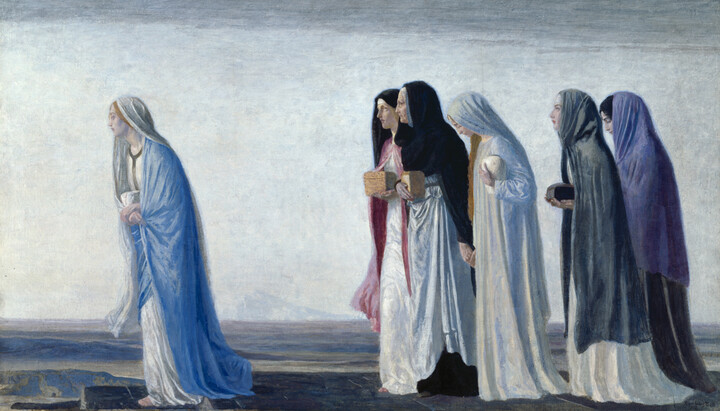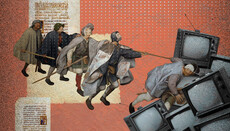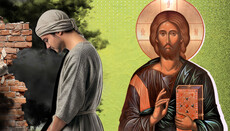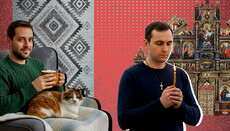The woman’s path of the heart – unfathomable to the mind of man

The feminine heart loves in defiance of everything. It does not follow logic; it lives by feeling. The women continued to love Christ even in death as if He were alive.
The Sunday of the Myrrhbearers has become the symbol of woman’s sacred ministry within the Church. God became man – He took on flesh in the form of a man. He is the New Adam, and from His pierced side was fashioned the New Eve – the Church of the Living God.
But who stands, next after Him, above the angelic choirs, above the Seraphim themselves? The Mother of God – more honorable than the Cherubim, beyond compare more glorious than the Seraphim. The Gospels do not record it, but I do not doubt it: She was the first to whom the risen Christ appeared. That is why she is not among the women hastening to the tomb. The Theotokos knew – her Son was no longer there. That is why she is not among the apostles when the Risen One first comes among them.
The Incarnation and Resurrection of Christ changed the spiritual hierarchy of values. After the fall, mind and logic replaced the direct knowledge of God. Since then, people have lived by understanding, derived from God’s revelation of Himself. The interpretation of that revelation is a function of the intellect – the dominant feature of the male principle. During this time, the woman is silent, listens, and follows the conclusions made by the male intellect. Laws and customs are built on these conclusions.
But then God comes into the world. He calls His disciples, who will later become apostles, to follow Him. Women also follow Christ. No one summoned them – they came of their own accord, drawn by the voice of the heart.
The apostles questioned, argued, misunderstood. But the women simply listened – and rejoiced. Not in His words – but in His presence. Where He is, there is light, there is warmth, there is peace. They needed not His sayings, but His being. They were content to stand in His shadow – if only to be near Him.
Then came the disaster. The darkness. The sentence. The hill. The Cross. And the silence of death. The minds of men faltered. Disillusioned, they turned away. They thought they had been wrong, misled. Jesus could not be saved – but they might yet save themselves. Cold reason whispered: hide, retreat, survive.
But the heart does not heed such whispers.
The woman’s heart still burned with love. Even for the dead Christ – it burned.
For them, He had not changed – still their beloved Teacher. Even if He had been crucified and died, that changed nothing. They were loyal to Him in death as they were in life. That is why they went to the tomb, not thinking about the armed guard. They feared not for their own safety. Their only worry was: “Who will roll away the stone from the tomb for us?”
That is why the Risen Christ appeared to the myrrh-bearing women before He appeared to the apostles. For the heart is always closer to God than mind.
Even during Christ’s earthly life, the Savior spoke great mysteries not only to His apostles. He also spoke with the Samaritan woman, revealing to her the mystery of Living Water. Mary, who sat at the Lord’s feet, became an icon of contemplation.
From that time to the end of the world, God leads the soul to Himself not by intellect, but by the way of the heart – by love, by prayer, by reverence.
Salvation is not found in thinking about God, but in feeling Him.
The mind, once exiled by the Fall, must return to the heart. Not the heart to the mind. That which belongs to man must bow before that which is woman’s. For in the heart lies the gate to Heaven.
The tragedy of our modern theology lies precisely here: it has rejected the heart’s way and returned to cold reason. The living path of inner prayer demands the silence of thought, even to the death of all thought – good and bad alike. This silence is not emptiness, but the fertile stillness in which God is known.
On this path, the mind falls silent, and the heart comes alive. Here, in the secret chamber of the heart, is the door to the Kingdom, for “the Kingdom of God is within you.” This is the path of the monks, the saints, the ascetics. Here was born the tradition of hesychasm – the quieting of the mind, the opening of the heavens.
But over time, we have forgotten this ancient path. And over the centuries, the devil managed to erect a reinforced concrete wall between the mind and the heart. Theology became logic. Faith became knowledge. “Belief” became “understanding.”
But knowledge cannot fill the empty heart. It cannot dispel the gloom of sorrow and despair. Like the apostles in Gethsemane, the mind will tremble, will flee, will hide from the Cross that Christ gives us to carry for our salvation.
Never in the entire history of the Church of Christ has humanity had access to so much Orthodox literature as it does today. Hundreds of thousands of books are freely available on the internet. There are countless excellent and engaging lectures. The sermons of modern priests are far more lively, saturated, and original than those heard from church pulpits a hundred years ago or more. If we compare what Saint John Chrysostom or Gregory the Theologian preached in the fourth century to what today's Orthodox preachers say, I have no doubt that the latter are far more interesting to listen to.
And yet – what has come of it? Are we kinder? Are our churches fuller? Has wisdom increased? Or has something deeper been lost?
In 1950, there were about 21 million Muslims in the world, 106 million Orthodox Christians, and 400 million Catholics. A little over half a century has passed. Today, there are nearly two billion Muslims. The number of Catholics is about the same as that of Hindus. Orthodox Christians – just 200 million, i.e. a thousand times fewer than Muslims. Islam is now the largest religious confession in the world, and its followers continue to grow steadily. Do they have eloquent theologians? A flood of books and preachers? No. What they have is practice, grounded in human moral instinct.
And what about Christians? In these years, we have developed liberal theology – a theology with its unprincipled permissiveness. A postmodern culture that mocks not just Christian virtue, but morality itself. Once-Christian nations have become lands, inhabited by consumers and hedonists.
The way of the mind leads to the same ideology that the ancient pre-Christian world lived by: “Eat, drink, and be merry, for tomorrow you die.”
That is so clear and so obvious. But what comes after? The mind does not know and cannot know. Only a pure heart and that inner intuition, which makes a person truly Christian, can sense it.
That is why today, women outnumber men in our churches. Because “it is only with the heart that one can see rightly; what is essential is invisible to the eye” (Antoine de Saint-Exupéry).
And it is not the intelligent or the educated who come to God, but the kind, the loving, the pure in heart. Some among them may be wise and learned – but that is not what brought them to Christ.
It was something deeper.
Something that stirred the myrrh-bearing women in the darkness before dawn.
Something that even now echoes in our own hearts.
Like the Paschal hymn.
Like joy on the threshold of eternity.











